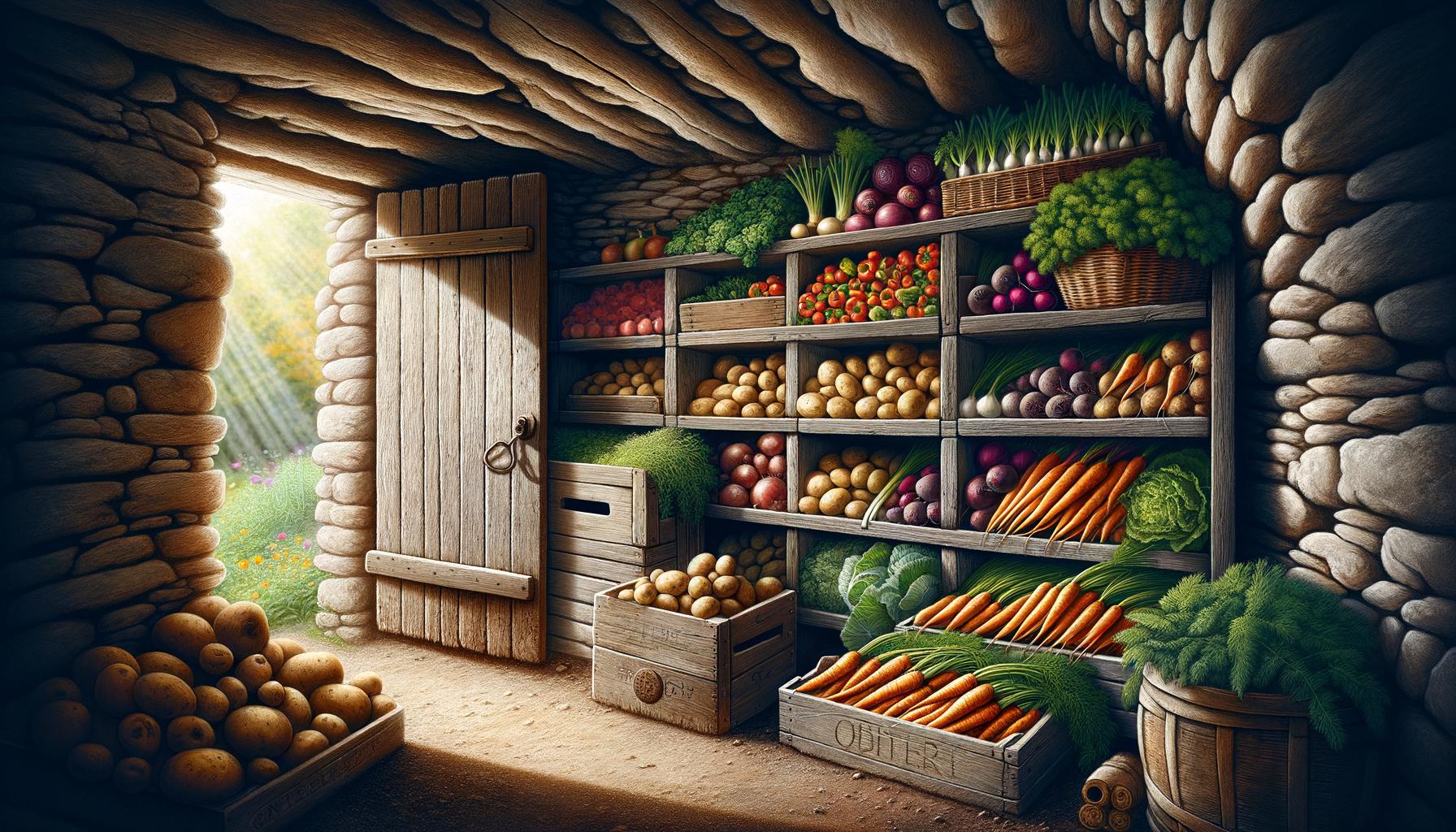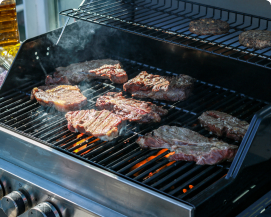Root cellars are not a new concept. They have been used for centuries as a natural way to store fruits, vegetables, and other perishables. However, in the age of modern refrigeration, the humble root cellar fell out of favor. Now, with increased interest in sustainability, local food sources, and self-sufficiency, the root cellar is experiencing a rebirth. In this article, we will explore what a root cellar is, its benefits, how to create one, and the best practices for storing vegetables naturally.
The Resurgence of Root Cellars
With the rise of the ‘farm-to-table’ movement and a growing awareness of the carbon footprint associated with long-distance food transportation, many people are seeking ways to store their locally sourced or home-grown produce. Additionally, as extreme weather events become more common, there is a renewed interest in traditional food storage methods that do not rely on electricity. This is where the root cellar steps back into the limelight as a practical solution for naturally storing vegetables.
Understanding the Root Cellar
A root cellar is essentially a storage space, usually underground, that uses the natural properties of the earth to maintain a consistent temperature and humidity level. It’s cool like a refrigerator but operates without any electricity. The consistent conditions prevent spoilage and keep stored vegetables and fruits fresh for months, particularly through winter when garden fresh produce is not available.
Designing a Root Cellar
Root cellars can vary widely in terms of size, construction, and location, but they all operate on the same basic principles. An ideal root cellar is cool, dark, slightly humid, and well-ventilated.
Location:
The first step in creating a root cellar is to choose the right location. An existing basement can be converted into a root cellar quite easily, but for those without basements, options include buried shipping containers, under-the-porch spaces, or a section of a garage insulated from the rest of the building.
Temperature and Humidity Control:
The goal is to maintain a temperature of about 32-40 degrees Fahrenheit (0-4 degrees Celsius) and a humidity level of about 85-95%. Insulation is critical in cold climates to keep the cellar from freezing. Earth-sheltering and good drainage prevent water from infiltrating the space.
Ventilation:
Proper ventilation is crucial to maintaining the quality of the produce. An intake vent will draw in fresh air, which is often cooler, whereas an exhaust vent will help regulate temperature and humidity by expelling warmer air.
The Benefits of Root Cellaring
The advantages of a root cellar go beyond just food storage. It provides food security, can save money on electricity bills, reduces waste by minimizing spoilage, and can even serve as a safe haven during extreme weather events. Furthermore, it supports local agriculture and seasonal eating because it allows for the long-term storage of locally harvested produce.
How to Stock Your Root Cellar
After you’ve set up a root cellar, the next step is to stock it with vegetables that store well under these conditions.
Best Vegetables for Root Cellaring:
– Root Vegetables: These are the superstars of the root cellar. Carrots, beets, turnips, and parsnips all thrive in cool, humid conditions.
– Potatoes: An iconic root cellar staple, they can last for months when stored properly.
– Onions and Garlic: When kept in a dry, well-ventilated part of the cellar, these bulbs can last for much of the winter.
– Cabbage: If left untrimmed and with outer leaves intact, cabbage can remain fresh for several months.
– Winter Squashes: Varieties like butternut, acorn, and spaghetti squashes prefer a slightly warmer and drier corner of the cellar.
– Apples: Certain apple varieties store well, but they need to be kept away from other produce to prevent their ethylene gas from hastening the spoilage of other vegetables.
Preparing Vegetables for Storage:
Each type of vegetable has its own preparation method for optimal storage:
– Clean root vegetables and trim tops before storing, but do not wash them, as moisture can lead to rot.
– Cure onions, garlic, and pumpkins by allowing them to dry in a warm, well-ventilated area for a week or two to toughen their skins.
– Sort through vegetables carefully before storage, removing any that are bruised or damaged to prevent the spread of decay.
Maintenance and Monitoring
It is not enough to just stock a root cellar; it needs to be regularly maintained.
– Monitor the temperature and humidity levels to ensure they remain in the ideal range.
– Check on your stored produce regularly, removing any items that have begun to spoil.
– Maintain proper ventilation to avoid the buildup of ethylene gas or mold.
Finishing Thoughts
The revitalization of the root cellar as a method for storing vegetables naturally speaks volumes about our shift towards sustainable living practices. Rather than relying on electric-powered appliances, we can harness the earth’s natural insulation to keep our food fresh. A root cellar not only preserves the bounty of the harvest but connects us with a time-honored tradition that has fed communities through the harshest winters. With careful planning, construction, and maintenance, a root cellar serves as both a bridge to the past and a step towards a more self-sufficient future.
Frequently Asked Questions
What is a root cellar?
A root cellar is a storage space, usually underground or partially underground, that uses the natural insulation of the earth to maintain a consistent temperature and humidity level. It’s traditionally used for preserving and storing vegetables, fruits, nuts, and other food items over the winter months without electricity.
Why are root cellars experiencing a rebirth?
Root cellars are gaining popularity again due to increasing interest in self-sufficiency, organic farming, local food movements, and sustainable living practices. In the face of climate change and energy consumption concerns, root cellars offer a natural way to store food without depending on refrigeration or industrial supply chains.
What are the best vegetables to store in a root cellar?
The best vegetables for root cellar storage are those that are hardy and less prone to spoilage. Examples include potatoes, carrots, beets, onions, garlic, apples, cabbages, turnips, and winter squash. Each type of vegetable has its own ideal storage conditions, so it’s important to place them correctly within the root cellar for optimal preservation.
How do I construct a root cellar?
Constructing a root cellar can range from digging out a portion of an earthen basement to building a separate structure buried in a hillside. Key factors include ensuring proper ventilation, maintaining enough humidity to keep produce from drying out, and making sure the temperature stays above freezing but cool enough to keep food dormant. Using insulating materials like straw or sawdust can help maintain the appropriate conditions.
Are there modern alternatives to the traditional root cellar?
Yes, modern alternatives include creating insulated cold storage rooms within your house or using specialized containers and coolers designed to simulate root cellar conditions. An old refrigerator or freezer buried in the ground can also act as an effective small root cellar for limited quantities of produce.
Can I use a root cellar in any climate?
While root cellars work best in climates with cold winters, they can be adapted to some extent in warmer areas through additional insulation or by burying them deeper underground. In very hot and dry climates, special adaptations, such as evaporative cooling, may be required to create an effective storage environment.
How do I maintain my root cellar?
Maintenance includes monitoring for any signs of spoilage, ensuring adequate ventilation to prevent the buildup of ethylene gas or mold, keeping an eye on temperatures and humidity levels, and securing the space from pests. Regular cleaning and inspection of stored produce will help to maintain a healthy environment for your vegetables.
What are the economic benefits of using a root cellar?
The economic benefits of using a root cellar include reducing food waste through better preservation, saving on electricity bills since no energy is required to maintain its temperature, and potentially decreasing grocery costs by purchasing in-season produce in bulk and storing it for the off-season.
Is it safe to store canned goods in a root cellar?
Yes, it is safe to store properly canned goods in a root cellar, as the cool and dark environment can help preserve their quality. However, it’s essential to keep canned goods off the floor to prevent them from rusting and to check them regularly for any signs of spoilage or botulism.
How large should a root cellar be?
The size of a root cellar depends on your needs and the amount of produce you plan to store. A small root cellar can be as little as 8’x8′, while larger households or those looking to store significant amounts of produce might consider a space upwards of 10’x15′ or more. Remember to account for shelving and walkways when planning your root cellar size.













